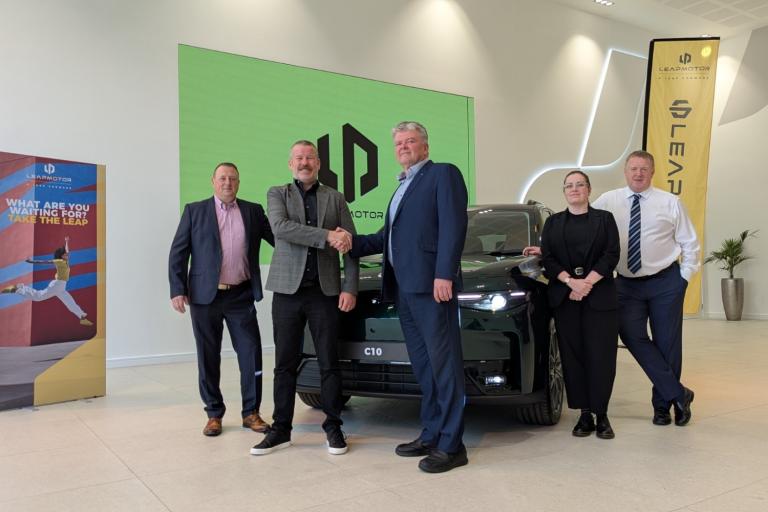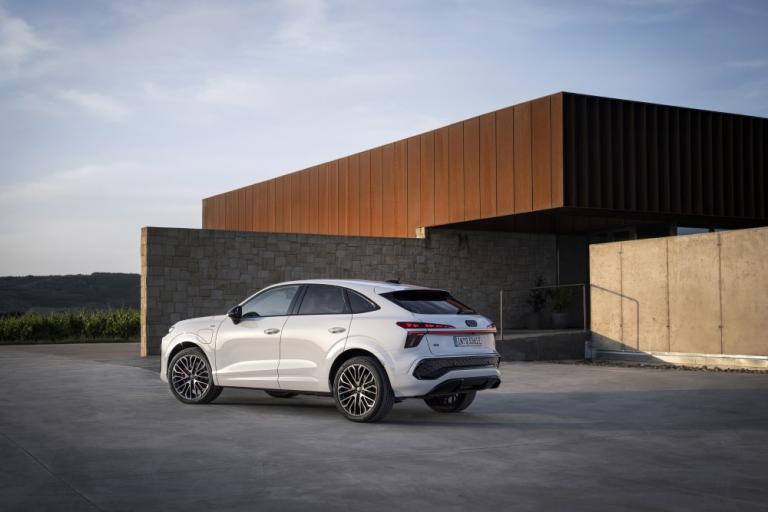All-New Land Rover Discovery 2017 Review
Published on 25 February, 2017
A voyage of Discovery: A new generation beckons where the tarmac meets the mud track
Overview
Coming out of the National Park visitor centre we were told to watch for what happened when we crossed the state line between Utah and Arizona.
Just as we reached the 'Welcome to Arizona' sign the smooth Utah tarmac ended abruptly. A mud-path confronted us. There followed nine miles of slippery, mucky, sloppy dirt track.
It was a strangely appropriate juncture, nonetheless. The contrast in conditions summed up the new Land Rover Discovery: it had just taken everything on and off road in its stride with near-contemptuous ease.
So going abruptly from one surface to another was of little consequence considering what we had already achieved.
For instance we had stopped the vehicle on a near-vertical rock crawl with a sheer-fall ravine gaping feet away, before flooring the accelerator to power our way to the top.
And we had flown up, down and over steep sand dunes.
And let 'off-road-cruise-control' (Active Terrain Progress Control or ATPC) take us up a sharp trajectory without a pedal being touched. The car took a moment to 'think' its way ahead and then just eased upwards at 1.1mph. That is a big step towards autonomous driving - off-road of course.
We crossed more than state lines on this two-day drive. It was indeed a voyage of discovery.
As I revealed last week the new Discovery costs from €57,815. It is already on sale in Ireland. That price is for the 2.0 TD4 'S' spec 5-seater (€570 road tax) and it is significant - but more of that anon.
First let me give you a different perspective. One that is as much a part of the Discovery's future as the evergreen go-anywhere technology has been of its past.
That technology is now clothed in major changes of looks and demeanour in a car designed for families seeking a large SUV (5 or 7 seats).
Minutiae can tell big stories about intentions: the fact it has up to nine USB point speaks volumes for the focus on family ownership.
So does the softer look along the flanks and the rear-roof lift - think enlarged Range Rover Sport. I didn't like the muscular look of the front but I'm softening. I really like the side and rear. Those softer lines also remove a bulkiness that may previously have daunted some potential owners.
And the combination of design and engineering work well, especially on the rather cosseting inside.
As I'd expected, the cabin was large, roomy and comfortable with myriad stowage slots for a family on the move. The central console alone will take several iPads, bottles etc. A clever little button opens an alcove on the dash where you can stash stuff behind the fold-down screen of buttons.
Driving, I had acres of room. So had our long-legged passenger in the middle row who regaled us with great stories as we traversed this Martian landscape in deep comfort. I have previously sat in the Discovery's third-row without being overly cramped. It is a proper seven-seater.
I drove the 240PS 2-litre HSE Lux and 3-litre V6 diesels. The former was particularly quiet and we were the first in it to negotiate that gravity defying scramble up the rocks. It and the 3-litre will sturdily fit the bill for towing/trailers (3,500kg) that more traditional Discovery buyers require. However, Land Rover reckon the 2-litre 180PS will appeal to the new sort of owner who needs the space and versatility of a SUV but isn't overly concerned about pulling or performance on, or off, road.
The fact they would allow a 2-litre under the bonnet is testament to how radical a technical transformation it represents. They can do so thanks to the 480kg they have shed by extensive use of aluminium. That's the equivalent of five 14st-plus adults. I liked the seats a lot: the headrests in our test cars were as soft as those in the Mercedes S-Class.
So you're sorted inside and out but what will it set you back?
They have managed to pitch prices below competitors. Spec on the entry-level 5-seater is impressive - ranging from cruise control to a swathe of connectivity - so it is not just a 'gimmick' pricing ploy. Also standard are 8spd auto transmission, air suspension and, of course, permanent 4WD.
You can also get loads of USB ports, four 12-volt charging points and an in-car 3G WiFi hotspot for eight devices.
Never mind undercutting big-SUV rivals, it looks serious value against top-spec versions of the smaller BMW X3 and Audi Q5. On the seven-seat front (from €71,700) it comes in under the Volvo XC90, BMW X5, Audi Q7 etc.
None of those can compete with it on off-road ability. But I do regret not being able to put it through more severe on-road tests (fear of heavy fines and/or jail kept us in check) because I suspect BMW would say their X5 would beat it on that sort of driveability - which is where the battle will be for many customers.
I also do know that people back the years had bad experiences with Discoverys, a fact the maker recognises but is at pains to point out how much matters have improved since.
There is no doubt the new model feels like a different animal altogether. I never thought I'd see a Discovery courting favour on so many fronts: from yummy mummies to those who need its go-anywhere ability.
And in testing that 'go anywhere' phenomena we explored not just the car but this rocky-mountain wonderland. With air suspension we could lift the body high and away from probing rocks; and then sit low on the long smooth roads. We looked in awe at crimson walls of stone, plunging valleys and vast stretches of prairie. Every turn brought a new geological wonder.
It was impossible not to feel the depth of the ages, the minute but irresistible forces at play in shaping the landscape. The fact our vehicle was called Discovery was apposite.
This was a discovery on several fronts. We were, at once, exposed to geological grandeur and cocooned from its flinty edge in our 2017 space module Discovery.
It was all long way from what most of us will ever expect to encounter. Some will, of course, test its off-road mettle. But many will never even cross the line from tarmac to mud-path. If they do, the Discovery will ensure they'll hardly notice the difference.
Discovery: Key Facts & Figures
Eddie Cunnngham
Starting price is €57,815 for the 2.0 TD4 ‘S’ spec 5-seater (€570 road tax). The SE from €64,665 is likely to be a big seller. HSE trim costs from €71,885 and HSE Lux from €80,890. SD4 versions start at €63,215.
Demand for 7-seater versions is expected to be strong. They start with the 2.0 SD4 S which costs from €71,700.
The 3-litre range starts with the 320bhp 3.0 TDV6 SE 7-seater (€750 tax). It costs €78,595.
* Both third-row seats have ISOFIX mounting points.
* ZF 8spd automatic gearboxes standard.
* 2,500-litres of luggage plus storage spaces.
* 38mm increase in wheelbase.
* Ground clearance up 43mm to 283mm. Wading depth up 200mm to 900mm.
* Multi-mode Terrain Response 2 system works across a range of settings. On extreme terrain, you can programme the All-Terrain Progress Control (ATPC) to autonomously keep a crawl speed. It comes with the Dynamic Pack.
* Activity Key wristband acts instead of a key fob.
* INCONTROL system has a 10ins touchscreen.
* Split rear-tailgate replaced by big ‘door’ and ‘inner’ tailgate.
* Slot in central armrest can take five iPads.
* There is a twin glovebox. *And room for the spare wheel.
* They expect 1,000 buyers in a full year.
Latest Reviews

Joe Norris Motors Named First Leapmotor Dealer in Ireland

Leapmotor T03 EV launches in Ireland this October from €18,950 with 265km range

All-New Audi Q3: Sporty, Smart & Built for Everyday Life